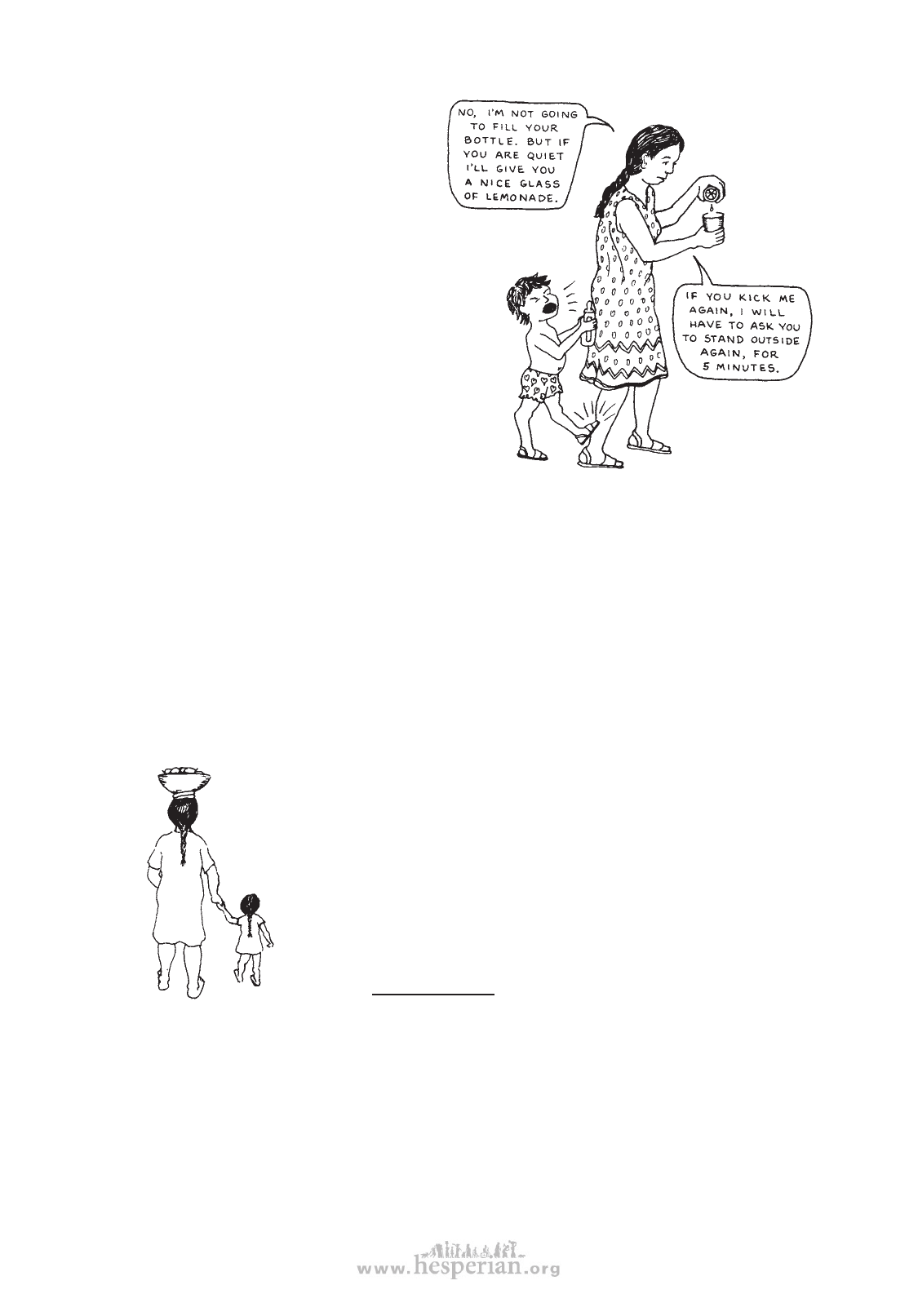
Celia’s mother decided to help her
outgrow the bottle little by little. For
a start, she filled it with water only.
After a few days, she refused to fill it
at all.
At first Celia screamed and kicked.
But her mother did her best not to
give Celia any attention when she
acted that way. As soon as Celia was
quiet, however, she would give her
a tasty drink from a glass, or some
other reward.
Sometimes Celia would throw
her empty bottle in anger. But after
a while she began putting it down,
more and more often, to pick up other
toys or objects. Finally, her mother
simply removed the bottle from sight.
LEARNING AND BEHAVIOR 361
After Celia had forgotten her bottle, she started to explore more with her hands. When
she needed to go ‘pee-pee’, she began to lower her panties by herself; in a few weeks
she was ‘toilet trained’. She also began to play with her toys more, instead of just throwing
them. As she learned to give longer attention to things, she discovered lots of things that
gave her pleasure. Many of her behavior problems such as screaming, spitting food, and
kicking began to disappear. Her mother, father, and brother spent more time playing and
talking with her. They praised her when she behaved well, and did their best to ignore her
‘bad’ behavior.
Where it seemed necessary, her mother began to use a behavioral approach to help
Celia develop other skills: dressing, eating, and talking. To increase her language skills,
together they looked at picture books and listened to songs.
As a result of her family’s efforts, Celia has grown up a lot,
and is a much happier and more able little girl. Thinking about
the changes that took place, her mother said, “I think my
behavior has changed as much as Celia’s. I was still treating
her like a baby—bottle and all! Now that I expect more from
her and show her how much I appreciate her effort, she has
developed a lot faster, and is a lot easier to live with. She and I
have both come a long way!”
•
Examples or methods for helping children develop basic skills using a behavioral
approach are discussed in other chapters: Feeding, Chapter 36; Dressing, Chapter 37;
and Toilet Training, Chapter 38. We suggest you also read again the chapter on child
development, Chapter 34, and consider how a behavioral approach can be useful for
helping a child through many difficult areas of development.
disabled village children